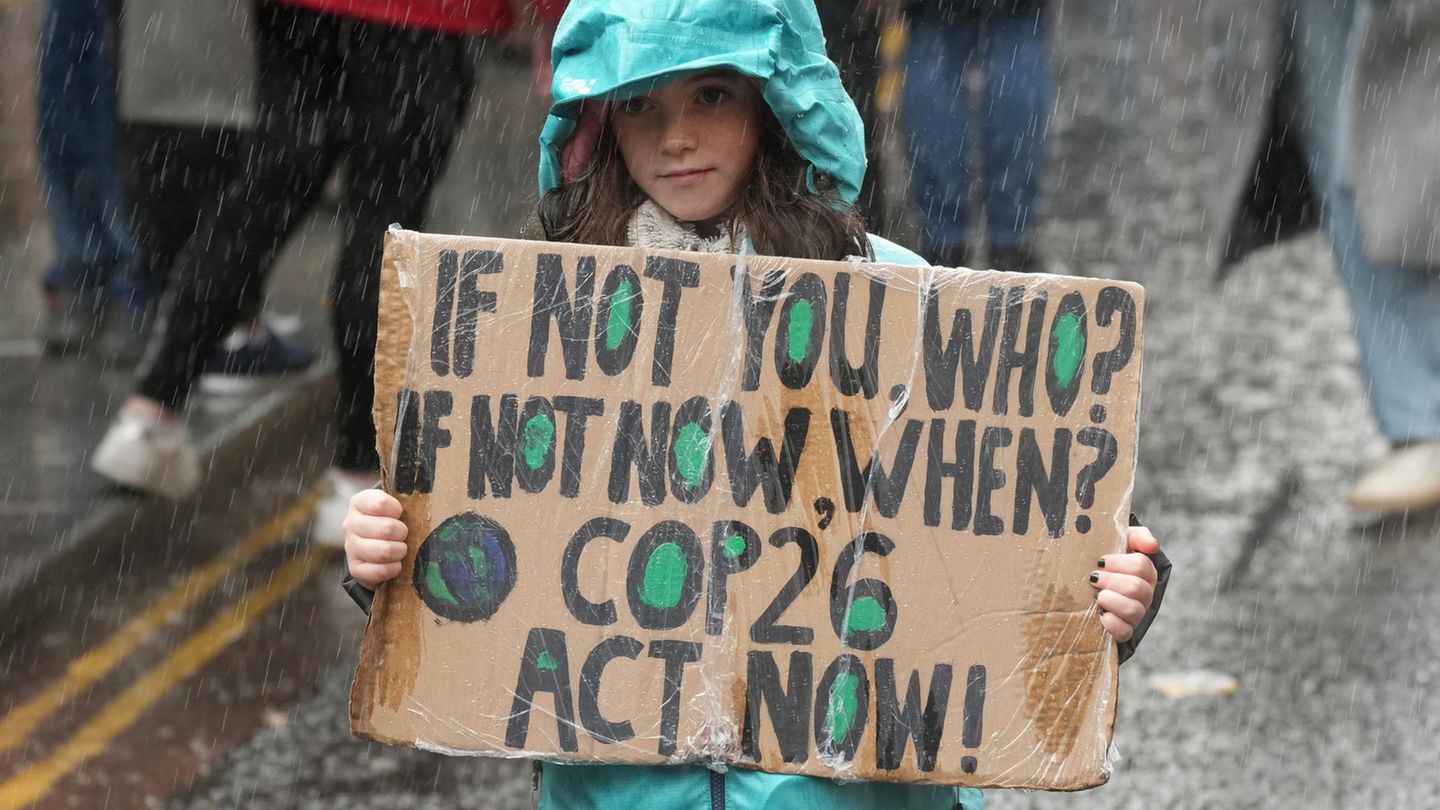The COP26 climate summit has been running in Glasgow for a week. Climate protectors are demanding more commitment, although some successes have already been recorded. But what do they bring?
The first week of the world climate conference COP26 in Glasgow is over. The negotiations resulted in a number of declarations of intent from participating countries, for example on methane emissions, the protection of forests and CO2 emissions. Experts are still cautious about what this could mean in concrete terms for the global climate, but some are already assuming global warming below two degrees.
State of affairs at the climate summit
The 2015 Paris Agreement on Climate Change states that global warming should be limited to two degrees by the end of the century and, if possible, to 1.5 degrees compared to the pre-industrial age. According to UN information, the earth, with the previous commitments by the countries to reduce greenhouse gases, was on the course of a “catastrophic” warming of 2.2 to 2.7 degrees.
Main announcements from COP26
Since the beginning of COP26, the countries that are important for climate change, India, Brazil and Argentina, have announced tightening of their previous climate targets. In particular, India, which is one of the largest emitters of greenhouse gases due to its population size, disappointed the climate protectors: The country is now officially aiming for climate neutrality, but not until 2070.
Around one hundred countries have also pledged to reduce their emissions of the important greenhouse gas methane by 30 percent by 2030. Major emitters such as China, India, Russia and Australia are not involved here. After all, the countries Brazil and Russia, which are important in this area, have signed a declaration to stop deforestation by 2030.
Initial assessments see temperatures below two degrees
UN climate experts have analyzed the previous commitments made by the states – whether or not they have been improved – and come to the preliminary conclusion that if they were implemented, the increase in greenhouse gases in the atmosphere would still amount to 13.7 percent by 2030. Previously, they assumed growth of 16 percent compared to 2010. However, in light of the 1.5 degree target, the target is a 45 percent reduction in greenhouse gas emissions.
The UN environmental program UNEP also emphasized that these preliminary analyzes are by no means a calculation of the effects on the actual rise in temperature. “It’s still too early,” UNEP boss Inger Andersen told the AFP news agency. “We don’t do calculations on the back of an envelope”. Scientific estimates and modeling would take time.
However, other scientists are already daring to make initial predictions. According to an assessment by the University of Melbourne, “for the first time in history, the total effect of 194 countries’ commitments could keep warming below two degrees” – with a 50 percent probability. If all short, medium and long-term promises are kept, it would be possible to limit the temperature rise to 1.9 degrees.
The head of the International Energy Agency (IEA), Fatih Birol, said his team had made similar calculations and assumed in previously unpublished analyzes that the temperature rise could be limited to 1.8 degrees. However, words would have to be followed immediately by action, emphasized Birol. “It is important that governments now translate their promises into clear and credible policies and strategies.”
Climate activists point out that the Paris target of 1.5 degrees will continue to be exceeded. If the temperature rises above 1.5 degrees, “some countries will simply disappear from the map,” emphasizes Juan Pablo Osornio from Greenpeace. Climate activists therefore agree with politicians such as US climate commissioner John Kerry: Much more needs to be done.
Source From: Stern
David William is a talented author who has made a name for himself in the world of writing. He is a professional author who writes on a wide range of topics, from general interest to opinion news. David is currently working as a writer at 24 hours worlds where he brings his unique perspective and in-depth research to his articles, making them both informative and engaging.




